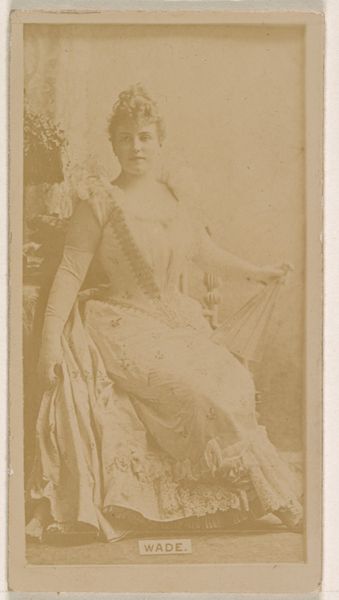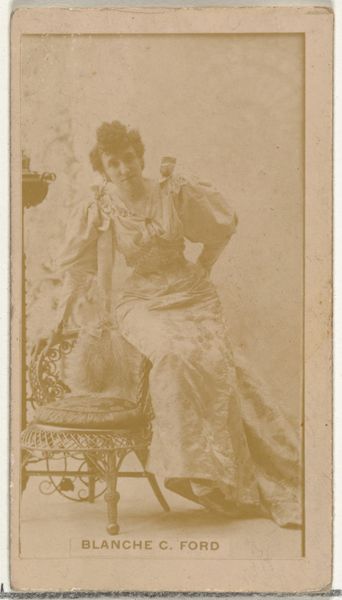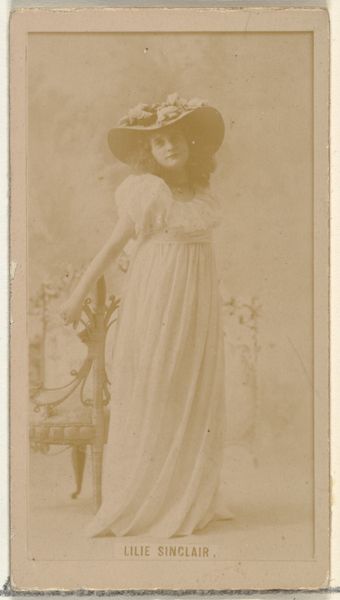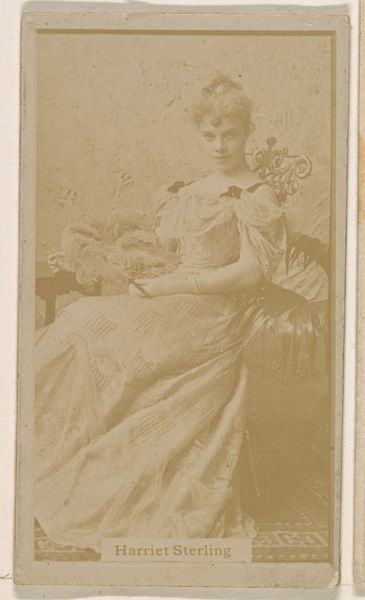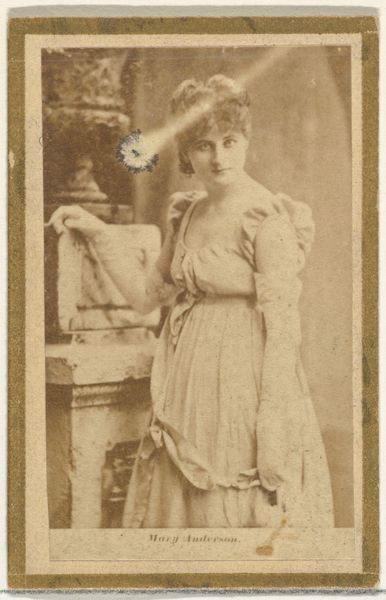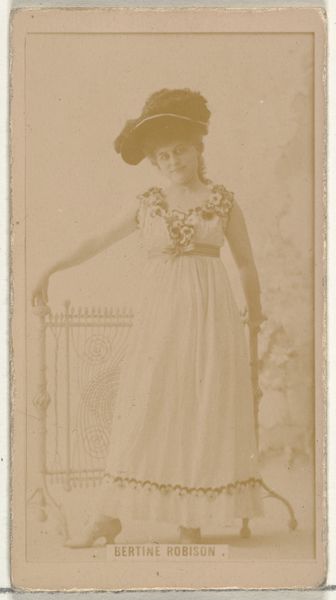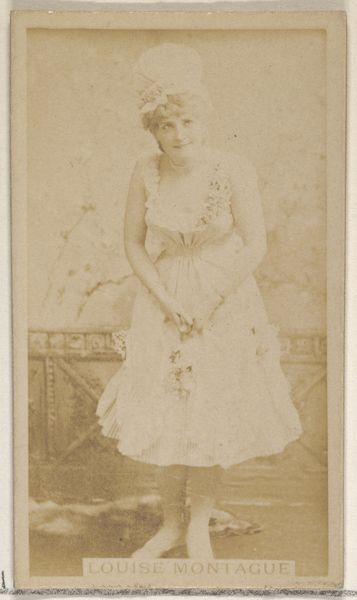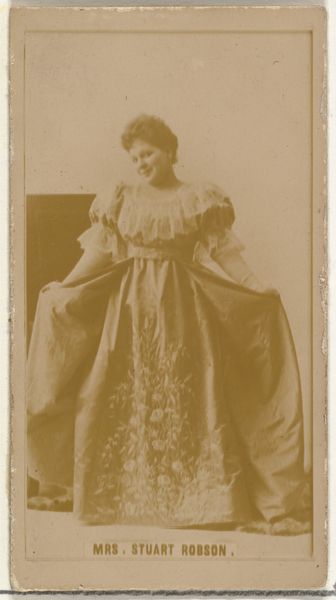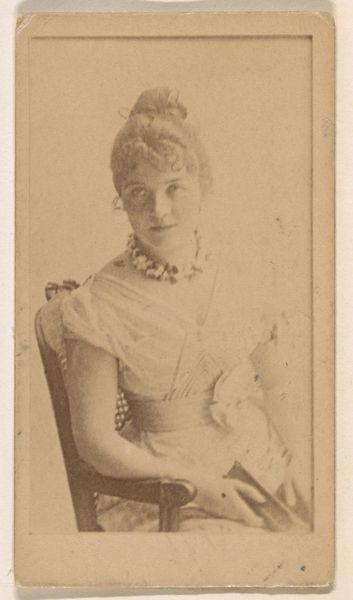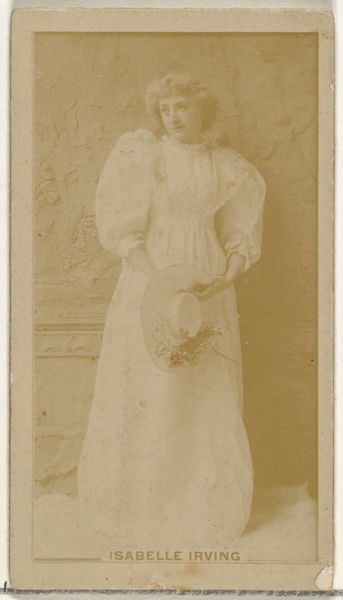
Millie Cecil James, from the Actors and Actresses series (N145-8) issued by Duke Sons & Co. to promote Duke Cigarettes 1890 - 1895
0:00
0:00
print, photography
#
portrait
# print
#
photography
#
realism
Dimensions: Sheet: 2 11/16 × 1 3/8 in. (6.8 × 3.5 cm)
Copyright: Public Domain
Curator: There's a faded serenity to this small card, a stillness I find quite compelling. Editor: Compelling in what sense? It seems quite… unremarkable. Curator: Ah, but look closer. We’re looking at "Millie Cecil James, from the Actors and Actresses series" published by W. Duke, Sons & Co. between 1890 and 1895. It's not just a portrait; it’s a symbol of cultural aspiration circulated through a mass medium, a cigarette card. Millie is cast as something of an icon. Editor: I see her presented here in a realistic style, very straightforward. You called her an icon. What do you see in the imagery? Curator: Precisely the ordinariness is telling, paradoxically. Consider what the promoters Duke Sons and Co were actually selling and the visual grammar of the image as an advertising tool. Cigarettes, pleasure, success. The bouquet in her hands is no accident. The flowers would have meanings and connotations to period consumers that signal to the public her "virtue". The chair itself acts like a thrown signaling a type of personal majesty. She exudes gentility and composure. Her image is now detached from her self; she becomes the archetypal image of success sold with their tobacco products. Editor: And her appeal helped sell… tobacco. It seems exploitative now. What were the circumstances surrounding the production of cigarette cards at the time? Curator: In late 19th century industrialization, this type of advertising acted as both an advertisement but as an emerging source of visual media, offering working-class citizens one of their first views of a "famous face". Think about the culture surrounding that visual hunger. Millie's persona has shifted from actress to popular brand ambassador, her image a symbolic touchstone of what late 19th-century people are buying and how these mass consumer items influence culture. Editor: I am compelled to revisit our earlier dismissal and will concede it holds much for socio-political discussions of media in its time. These symbols seem quite layered now. Curator: Indeed. Its value as a social object opens further discussions regarding advertising, commerce, performance, and social perception within its period.
Comments
No comments
Be the first to comment and join the conversation on the ultimate creative platform.
